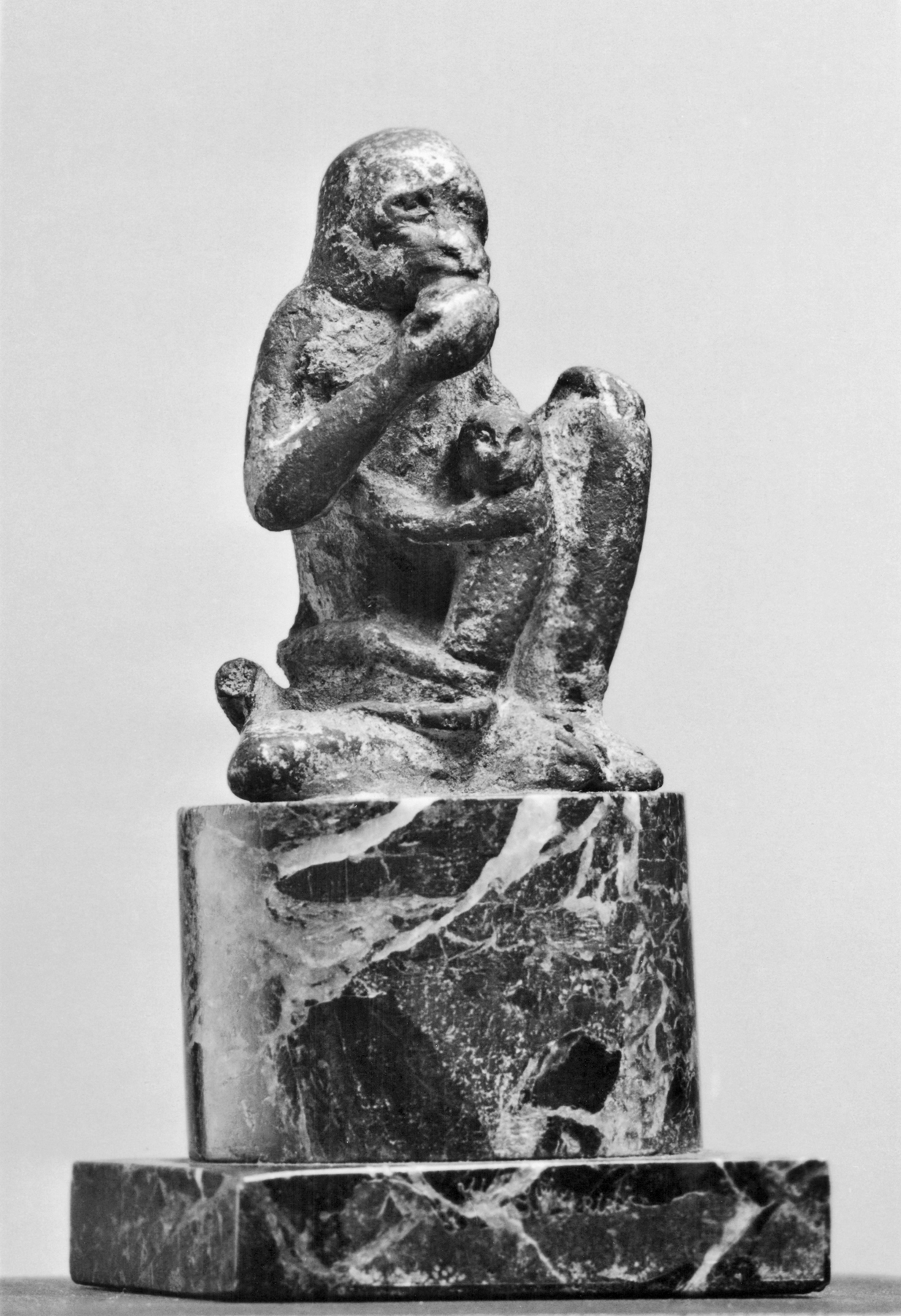Statue of a Monkey with Young
(Ancient Egypt and Nubia )
The small statuette represents a seated female monkey with one of its young on its lap. Its left hand rests on the left upright leg, and with its right hand it eats a fruit. Monkeys were popular in Egypt and were depicted in tomb paintings as companions of the people in the fields, as well as musicians and dancers.
Provenance
Provenance (from the French provenir, 'to come from/forth') is the chronology of the ownership, custody, or location of a historical object. Learn more about provenance at the Walters.
Dikran Kelekian, New York and Paris [date and mode of acquisition unknown]; Henry Walters, Baltimore, 1909, by purchase; Walters Art Museum, 1931, by bequest.
Conservation
| Date | Description | Narrative |
|---|---|---|
| 9/15/1959 | Treatment | cleaned |
| 8/19/1998 | Examination | survey |
Geographies
Egypt (Place of Origin)
Measurements
1 15/16 x 1 7/16 x 1 1/4 in. (5 x 3.6 x 3.2 cm);
mount: 1 7/16 x 1 7/8 x 1 13/16 in. (3.7 x 4.8 x 4.7 cm)
Credit Line
Acquired by Henry Walters, 1909
Location in Museum
Accession Number
In libraries, galleries, museums, and archives, an accession number is a unique identifier assigned to each object in the collection.
In libraries, galleries, museums, and archives, an accession number is a unique identifier assigned to each object in the collection.
54.392


